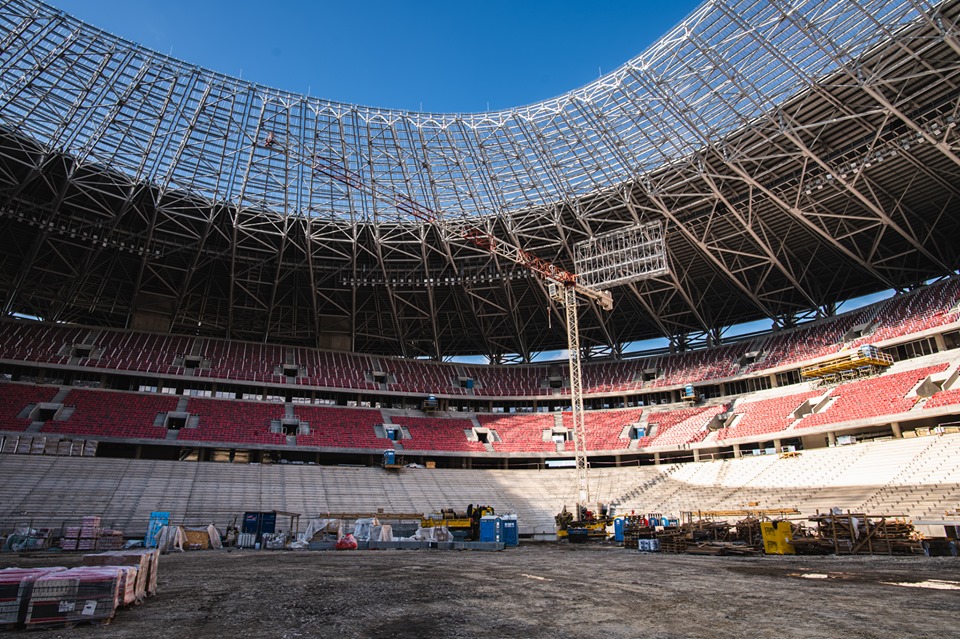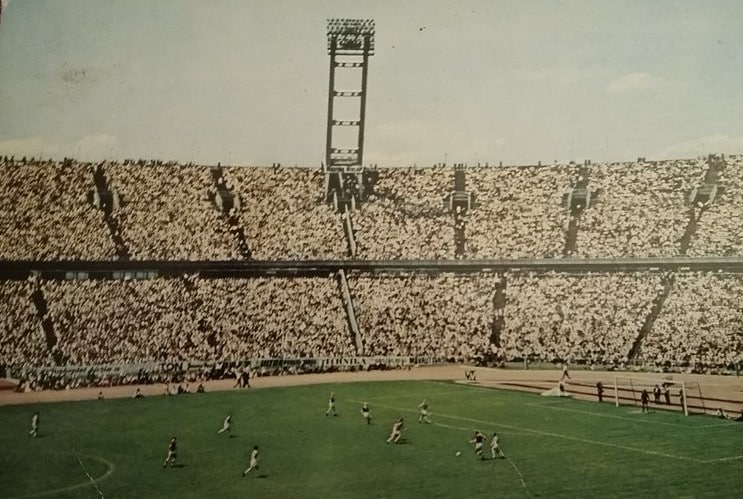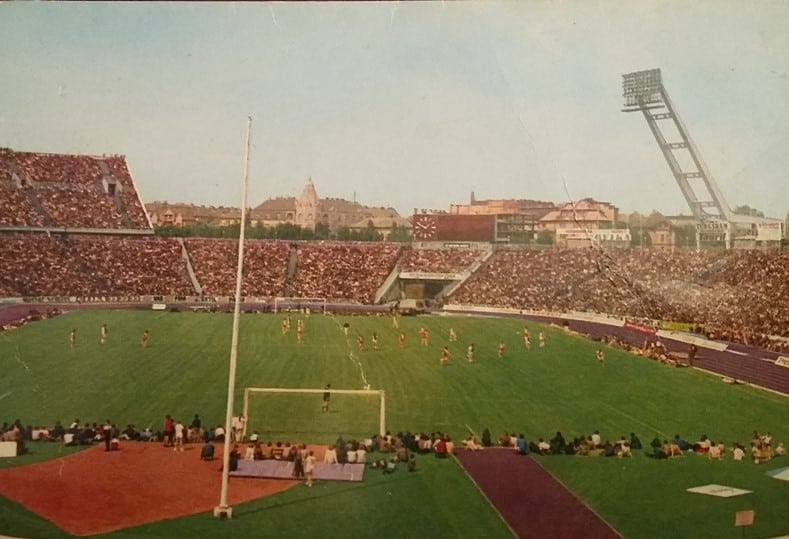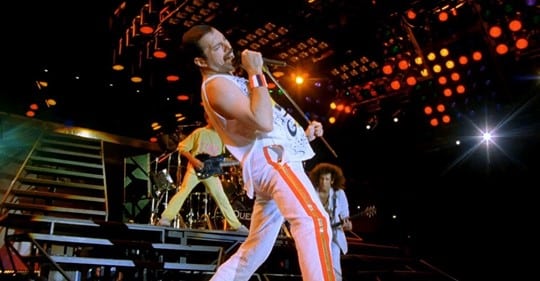The iconic Puskás Stadium opened 66 years ago!
On 20th August 1953, Népstadion (People’s Stadium – renamed to Ferenc Puskás Stadium in 2002) opened its gates to athletes, artists, and the audience. A great ceremony accompanied the event – for the Communist leadership of the era, it was a prestigious investment. The new Ferenc Puskás Stadium is opening in November.
In the stadium, there used to be room for 68976 people. Sporting events and musical performances were organised there. The number one football pitch of the Hungarian team had always been in this stadium until it was unbuilt. Its successor,
the new Ferenc Puskás Stadium, is going to be finished soon, and the first match in it is going to be played on 15th November 2019.

Photo: https://www.facebook.com/puskasarena/photos
The idea of a grandiose stadium in Budapest was born in 1896 when Budapest had the chance to organise the first modern Olympic Games. After some reluctance at the beginning, the Greeks organised it in Athens, but the plan of the stadium stayed on the agenda. This need started to be urgent after the successful performance of Hungarian athletes, and in 1911, Budapest got permission to organise the Olympic Games in 1920. However, WWI hindered the plans.
According to the first plans, the stadium of Budapest would have been built on Vérmező, but the vicinity of Nándor Garden and Krepesi Road (the Hungarian Jockey Club had moved from there) were also taken into consideration. However, the economic crisis after the war did not make the investment affordable at all. Later, a new law was introduced in 1924 to build a new stadium for the people, and sports tax was imposed for this purpose. However, the income was not spent on the sports facility because of the Great Depression. One of the aspirant designers of the new stadium was Alfred Hajós (Olympic Champion of 1896) who was awarded for his plans, but there was no chance to implement them at the time. In the ’30s, the idea came up again after stabilising the economy. Places like Aranyhegy, Városliget, Margaret Island Lágymányos, and Pasarét were considered, but WWII obstructed the execution.

Photo: facebook.com/Népstadion Emlékoldal!
After the war, the parliament voted on the construction in 1945, and the accident at the FTC (Ferencváros-Fradi) pitch accelerated the execution – part of the grandstand broke, and 250 spectators fell down. It was a miracle that nobody died. The construction started on 13th July 1948 under the leadership of Károly Dávid (architect) and Jenő Gilyén (structural engineer). 90% of the elements were instantly fractured and used. According to the original plans, the room for spectators was to be 70000 seats, and later, they would have extended it to 100000. 18 pylons held the grandstands, and two Marathonian gateways were built at the Northern and Southern entrances.
Masses of workers took part in the construction voluntarily, including the Hungarian Golden team with Ferenc Puskás.
The construction finished in 1953, and the stadium opened on 20th August. 78000 seats were available, but the extension to 100000 never happened – it was only extended to 83000 in 1959. The first stadium director was Imre Németh, a former Olympic Champion in hammer throw.

Photo: facebook.com/Népstadion Emlékoldal!
The celebration of the opening was made memorable with a flag parade, marching bands, folk dance groups, and the opening games. The second day of athletic games between Hungary and Norway was won by Hungary (140.4-70.5). The football match between Budapest Honvéd and Spartak Moscow followed. Hungarian women national teams A and B also played – the score was 7-3. Hungary won again (3-2). A pyramid raised from the red star with the Statue of Liberty on top was the image of the ceremony.
Take a look at the list of the most famous artists and musical performances in the stadium:
- 1965 – Louis Armstrong
- 1986 – Queen
- 1987 – Genesis
- 1988 – Human Rights concert: Peter Gabriel, Sting, Bruce Springsteen, Tracy Chapman, Youssou N’Dour, Hobó, Bródy János
- 1990 – Illés (concert) + István, a király (theatre play)
- 1991 – AC/DC, Metallica, Mötley Crüe, Queensrÿche
- 1992 – Guns N’ Roses
- 1993 – U2
- 1993 – Jean-Michel Jarre
- 1994 – Omega
- 1995 – Hungária
- 1995 – The Rolling Stones
- 1996 – Michael Jackson
- 1999 – Omega, opening act: P. Mobil
- 2000 – Michael Flatley (Lord of the Dance)
- 2001 – Illés, Metro, Omega (Superconcert)
- 2004 – Omega
- 2005 – Neoton Família
- 2006 – Depeche Mode
- 2006 – Robbie Williams
- 2007 – George Michael
- 2007 – The Rolling Stones
- 2009 – Depeche Mode
- 2010 – Metallica
- 2013 – Depeche Mode
- 2013 – Roger Waters

Photo: facebook.com/Fans of Queen
The stadium has become dangerous nowadays because of its old elements. The renewal construction is going to be finished in November 2019, and the new Ferenc Puskás Stadium is going to open its gates again for sports and art soon.





